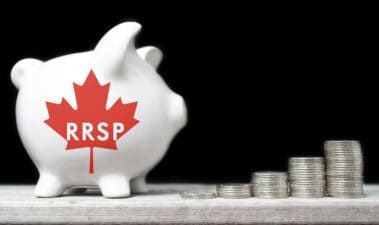When it comes to investing, many Canadian investors who are new to it might think they need a lot of wealth to get started. After all, we’ve long heard it “takes money to make money.” And while that’s true, it doesn’t mean you need a lot of money.
Let’s say you can put aside $83 per month from your pay cheque. That would add up to $1,000 over a year. Continue doing that year after year, and you can certainly create a lot of savings. And that $1,000 can help you get started with investing right away. So, once you have that $1,000 in hand, what now?
Build it
To get started investing in Canada, you’ll need a way to start building wealth. That means having goals in mind and a place to keep that cash. Before you start investing, it’s essential to define your financial goals. Are you saving for retirement, a down payment on a house, or simply looking to grow your wealth? Understanding your objectives will guide your investment choices and risk tolerance.
For new investors, using tax-advantaged accounts like a Tax-Free Savings Account (TFSA) or Registered Retirement Savings Plan (RRSP) can be highly beneficial. A TFSA allows your investments to grow tax-free, and you can withdraw funds at any time without penalties. An RRSP offers tax-deferred growth, and contributions can be deducted from your taxable income. Depending on your goals and tax situation, choosing the right account is crucial.
From there, select a reliable brokerage platform that offers low fees and an easy-to-use interface. Many Canadian banks offer direct investing platforms, and there are also online brokers like Questrade and Wealthsimple Trade that provide competitive fee structures and user-friendly experiences.
Diversify
With $1,000, diversification is key to managing risk. Consider investing in exchange-traded funds (ETFs), which allow you to buy a diversified portfolio of stocks or bonds with a single purchase. For instance, a broad-market ETF like iShares Core MSCI All Country World ex Canada Index ETF (TSX:XAW) can give you exposure to global equities, spreading your risk across various markets and sectors.
Low-cost index funds or ETFs are ideal for new investors due to their diversification and lower management fees compared to mutual funds. They track specific market indexes and can provide steady growth over time. Look for funds with low expense ratios to maximize your returns.
If you’re worried about market volatility, dollar-cost averaging can be a prudent strategy. This involves investing a fixed amount of money at regular intervals (e.g., monthly or quarterly), regardless of market conditions. Over time, this can reduce the impact of market fluctuations and lower the average cost of your investments.
Keep it going!
Investing can be complex, so it’s important to educate yourself about different investment options, strategies, and market conditions. Resources like online courses, financial news, books, and reputable financial websites can help you make informed decisions. The more you learn, the better equipped you’ll be to manage your investments.
Regularly review your investment portfolio to ensure it aligns with your financial goals and risk tolerance. As you gain more experience and possibly more capital, you can adjust your investments to better suit your evolving needs. Rebalancing your portfolio periodically can also help maintain your desired asset allocation.
Starting with $1,000, new Canadian investors have numerous options to begin building a robust investment portfolio. By setting clear goals, choosing the right accounts, diversifying investments, and continuously educating themselves, they can lay a strong foundation for long-term financial success. Remember, the key to successful investing is patience, discipline, and a willingness to learn.








